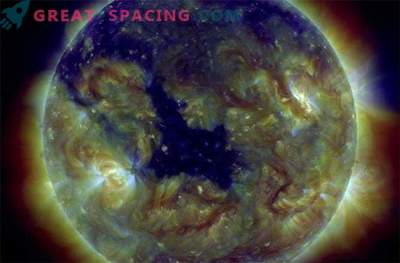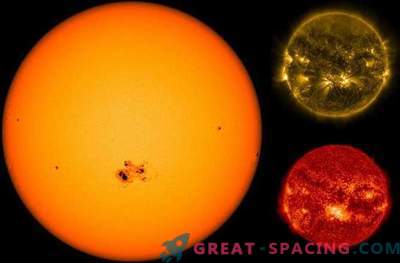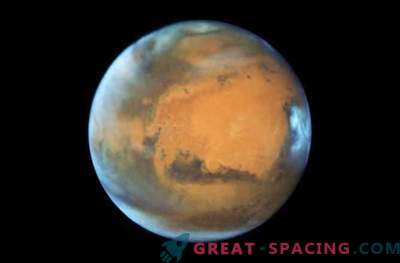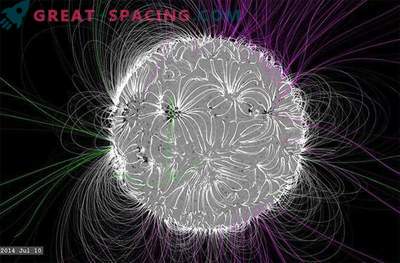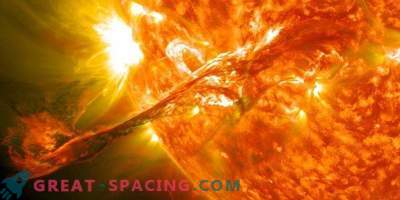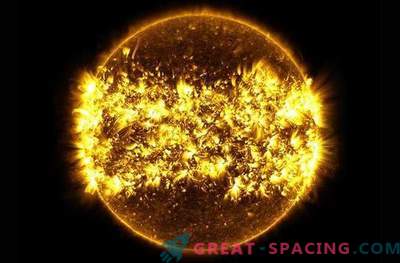
The sun has turned to the Earth with a coronal hole, and we have the opportunity to observe the radiance on the eve of the New Year.
Just like an ominous storm hiding on the horizon, solar astronomers spy on a large coronal hole that has arisen deep inside the magnetized atmosphere of the Sun (corona). And since it is turned towards us, the turbulent space weather will also affect the Earth. But you do not need to prepare shelters from a tornado or knock out windows and doors. This type of storm has minimal impact and will actually produce several auroral fireworks in 2017.
The observatory of solar dynamics (SDO) NASA tracked the dark area in the lower corona of the Sun, rotating in sight. Coronal holes are associated with streams of rapidly moving superheated plasma emerging from the inner side of the sun, and then accelerating in space. It follows the magnetic fields that cover the lower space, and flows into the interplanetary.
As the Sun rotates, it sweeps the magnetic fluxes into the Solar System, sending high-energy particles in the form of a fast solar wind. It also sweeps away slowly moving plasma flows, which can create a barrier. The areas where these two streams interact are known as the rotating in one direction interaction areas (CIRs). They collect plasma “in a heap”, creating dense streams. And as we see, CIR is on its way to us. The SDO marks the hot, sunny atmosphere thanks to a variety of filters sensitive to different wavelengths. Each length represents a different plasma temperature and, in the above observation, the observatory looks at the plasma glowing at a temperature of 2.25 million Fahrenheit (1.25 million Kelvin). At this length, the coronal holes become apparent - dark, since the plasma density is very small (particles are lost in space very quickly). Bright areas are filled with plasma at this temperature, as they are trapped in closed magnetic lines of force that cause coronal loops.
As a rule, solar particles in fast streams of coronal holes take several days to reach from the Sun to the Earth. Therefore, solar physicists can make predictions about what will happen when CIR spills over our planet. Although dramatic events can be expected if the Sun triggers an explosive reaction, but CIRs are likely to activate the aurora.
When solar particles strike a powerful magnetic field of the planet, electric charged particles (ions) deviate from the global magnetosphere and go to the polar regions, where the magnetic field passes into the planet's crust. When a solar storm hits, these particles fall as rain through the atmosphere at high latitudes. That's when the magic happens, known as shine. And we can say that we will see it on New Year's Eve. Space weather forecasting is crucial for our technological civilization. Explosive corona events can generate powerful X-ray flashes ionizing the upper layers of our atmosphere. This blocks some radio communications, which will affect air traffic. If they fall to Earth, then the radiation situation in orbit will increase, which will disable the satellites. In extreme cases, electric currents will pass through the atmosphere, overloading the electrical grid.
So now we are expecting a shine. But tracking the activity of our star is important in protecting satellites in orbit and life on Earth.
